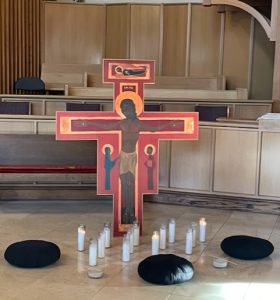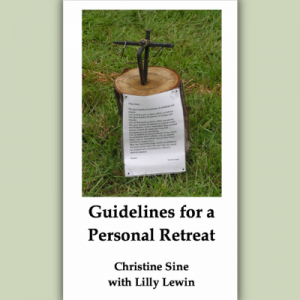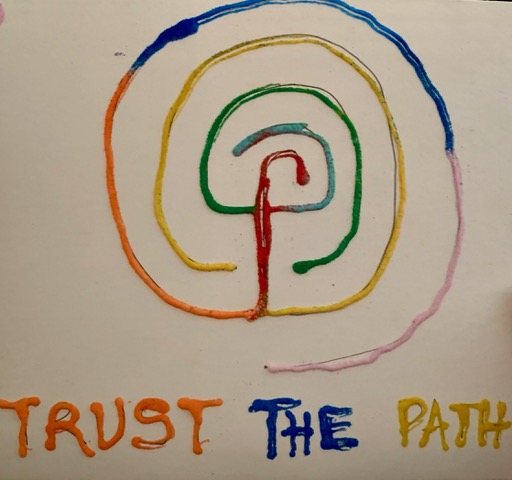What are the rhythms and rituals that hold your life together? What do you do to sustain them?
You have probably figured out that this is one of my favourite topics to talk about, especially at the moment when there seems to be so much that is destabilizing the rhythm of our lives and the world in which we live. It is also a theme that I continue to grow in my understanding of every year. I first talked about it in my book Godspace and then again in Return to Our Senses, and now I am working on another book that will further express what I have learned.
My growing understanding connects to my increasing rootlessness in the earth and my concern for creation. As I said in my Meditation Monday last week, we all need “symbols and rituals of hope that connect us to the earth and the rhythm of life.” So now we need to explore what those symbols and rituals could look like and how they reinforce our connections between worship and creation.
What makes for resilient spirituality? How do we maintain and grow our faith through the ups and downs of life while growing the roots that go deep into our ever-changing understanding of who God is?
I still draw from my book Godspace, (originally called Sacred Rhythms) and the helpful concept of two types of rituals – those of restoration and of transformation that anthropologist Paul Hiebert wrote about in his book Anthropological Insights for Missionaries.

Taize style worship – photo Christine Sine
Rituals of Restoration
These are the practices that reinforce our faith in the beliefs that order our lives and anchor us in the religious communities in which these beliefs are expressed. Restorative practices are highly structured and do not change from day to day or year to year. They reaffirm our sense of order and meaning in the universe, our community & our own lives. Most importantly, they intentionally connect our daily activities to the life, death and resurrection of Christ.
Possibilities include daily prayer, sabbath practices, regular church gathering, taking communion, following the liturgical calendar and the use of liturgical symbols like the sign of the cross, candles, and incense. I even find that writing my weekly blog post can be a stabilizing and restorative ritual. Creation-based rituals are the main place in which these have changed for me. In the last couple of years, I added creation-based rituals and rhythms to these; working and walking in the garden – and my awe and wonder walks around the neighborhood – are tremendously powerful restorative practices.
Generally speaking, it is the creation of rhythms rather than the actual practices that are important. The practices may change but I love to have a regular rhythm to the day, week and year. In fact the breaking of this rhythm is one thing I find destabilizing. Praying each day is an essential part of my faith practice but what those prayers look like can change from day to day and week to week.
What are the restorative rituals that anchor your beliefs and reinforce connections between creation and your faith?
Rituals of Transformation
These are characterized by a high degree of creativity with little repetitive structure. Their goal is to upend the established way of doing things and restore a measure of flexibility and personal intimacy. They stop our restorative practices from becoming boring and our faith from becoming stagnant. They encourage our faith to grow and change, enabling us to adapt to the passages of life and changes in our culture. In the liturgical calendar, Advent & Lent were specifically designed with this intention. Prayer retreats, conferences and workshops can also accomplish this – though these days it seems that such events are more geared towards reinforcing the status quo than changing it. Pilgrimage, Biblically and culturally based celebrations like Easter and Earth Day can also accomplish this. Prayer walks, and even walking the labyrinth are all practices that maintain this type of flexibility.
When I was on the Mercy Ship Anastasis, and the ship was ready to sail to a new port, we held what was called a moving of the ark ceremony, harkening back to the fact that the Israelites would only break camp and move when the cloud over the ark of the covenant moved. We celebrated with a special worship service, sharing the good things that had happened in the port we were leaving, sharing communion and then learning a little about the new port we were heading towards as a time of preparation.
I don’t live on a ship that moves every few weeks anymore but I know the importance of marking milestones in my life journey in similar ways. Acknowledging transitions, looking back with gratitude and forward with anticipation is a wonderful, faith-building exercise that all of us should practice on a regular basis.
What are the practices that provide both stability and flexibility in your spiritual life? What are transformative habits that shape your faith?
 No matter the time of year, it’s important to pause and take time to reset and restore. An excellent way to do that? Take a personal retreat. Building a retreat into the rhythm of your life is a spiritual practice often lost in our helter-skelter, busyness-is-next-to-godliness world. This booklet is based on the most popular posts about spiritual retreats published on Godspacelight.com over the last few years and provides resources for taking a spiritual retreat either on your own or with a friend or spouse. Check it out in our shop!
No matter the time of year, it’s important to pause and take time to reset and restore. An excellent way to do that? Take a personal retreat. Building a retreat into the rhythm of your life is a spiritual practice often lost in our helter-skelter, busyness-is-next-to-godliness world. This booklet is based on the most popular posts about spiritual retreats published on Godspacelight.com over the last few years and provides resources for taking a spiritual retreat either on your own or with a friend or spouse. Check it out in our shop!

